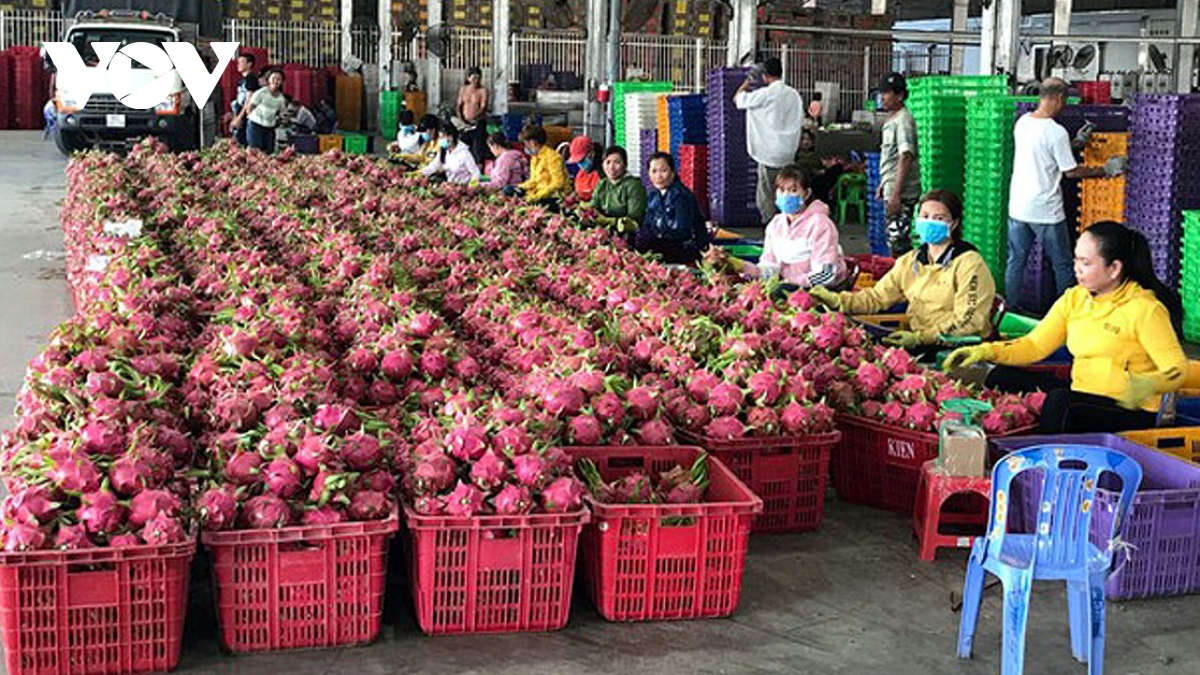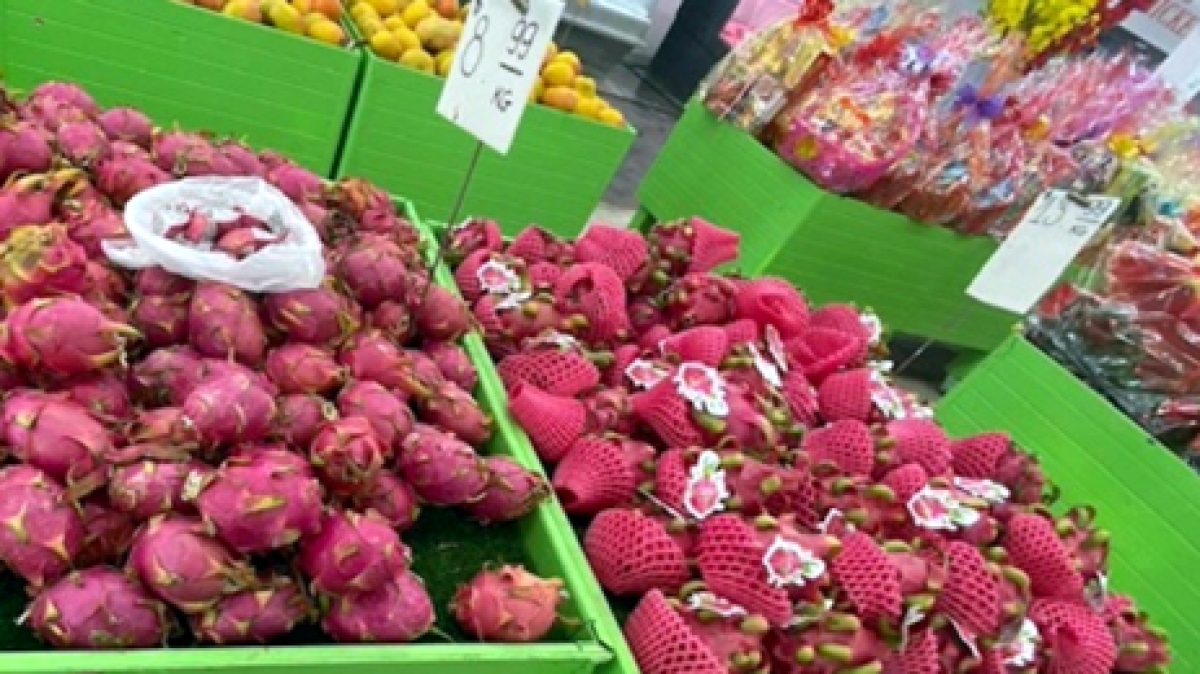Agricultures, Foods, News & Event
Improve the quality of dragon fruit towards potential markets
VOV.VN – Having difficulty in exporting large quantities to easy markets, it’s time for growers to improve the quality and brand of Vietnamese dragon fruit so that this fruit has the opportunity to approach difficult markets.
Recently, Vietnam’s dragon fruit is still mainly exported to China, India, Australia, New Zealand… In 2021, dragon fruit will continue to be the main export product of Vietnamese fruit. turnover reached more than 1.04 billion USD, accounting for 29.4% of the total export turnover of vegetables and fruits of the country.
However, from the beginning of 2022, fruit exports to the main market, China, faced many difficulties, causing a sharp decrease in turnover. Consumption is difficult, causing the price of dragon fruit to fall deeply, which is greatly affecting the activities of gardeners. This fact is also an urgent requirement for Vietnam to direct dragon fruit exports to promising new export markets, with higher quality and higher prices.

But when commenting on the prospect of dragon fruit, Ms. Thuy said that the demand for Vietnamese dragon fruit in foreign markets has not decreased. Through a series of online trade events in the field of agricultural products over the past time, many foreign importers are interested in developing a supply of high-quality dragon fruit from Vietnam.
Dragon fruit is now grown in many provinces and cities, but thrives in large-scale specialized cultivation areas concentrated in the provinces of Binh Thuan (29,000 ha), Long An (11,000 ha) and Tien Giang (8,000 ha), accounting for 93.6% of the area and 95.5% of the country’s output. As one of the localities with a large area of dragon fruit cultivation, the annual output of dragon fruit of Long An reaches about 350,000 tons. Over the past time, Long An has been implementing many solutions to build and develop sustainable dragon fruit areas in the direction of high-tech agricultural production, providing products according to orders all year round.
Ms. Chau Thi Le, Deputy Director of Long An Department of Industry and Trade, said that in addition to the traditional dragon fruit with red skin, white flesh, Long An province also has the main product of red flesh dragon fruit. Besides, Long An also develops many varieties of purple and pink dragon fruit, beautiful yellow skin, white flesh with high nutritional content to serve the domestic market and export.
Up to now, Chau Thanh dragon fruit products of Long An have been granted a Certificate of Geographical Indication by the National Office of Intellectual Property (Ministry of Science and Technology). Tam Vu dragon fruit trademark is also protected in 5 countries: USA, France, Japan, Singapore and China.
“Long An mainly exports fresh dragon fruit, but also has other products such as dried dragon fruit, dried fruit, dragon fruit powder… In the future, Long An hopes that the Export Support Center will continue. supporting local businesses to develop more export markets for agricultural products in general and dragon fruit in particular,” suggested Ms. Le.
Vietnam’s fresh dragon fruit is an official imported fruit into the Australian market since 2017 with an annual increase in export value. In 2020, dragon fruit exports to Australia increased by 36% compared to 2019, reaching 4.2 million USD. Meanwhile, in 2021 dragon fruit exports to Australia increased 14% compared to 2020, reaching $ 4.8 million. This figure is higher than the general growth rate of dragon fruits exported to all markets in 2021 of 8.5%.
In-depth information about the Australian market, Ms. Nguyen Thu Huong, representative of the Vietnam Trade Office in Australia, said that in addition to being consumed at Vietnamese stores, Vietnamese dragon fruit has been sold in supermarkets. Australia’s largest retailer. “Despite the impact of the Covid-19 pandemic, Vietnam-Australia trade still grew very well with the contribution of vegetables and fruits, including dragon fruit,” Huong said.
Noting the problems when exporting dragon fruit to the Australian market, Ms. Nguyen Thu Huong stated that the product must be quarantined and have a certificate of biosafety, must be treated by steam heat method to ensure No insects in the whole packaging. In addition, localities that grow dragon fruits need to determine the importance of close links between 3 houses: dragon fruit growers, exporters and importers.

From the beginning of 2022, realizing that the ability to export dragon fruits to the Chinese market is difficult, a representative of the Import-Export Department (Ministry of Industry and Trade) has also recommended that ministries, branches and localities and businesses need to check control and strictly implement regulations on product traceability and food safety.
In particular, it is necessary to strengthen strict management to ensure a safe dragon fruit production process according to the requirements of Covid-19 prevention and control from planting, purchasing, packaging, sorting to transportation for export. Especially, the group of fruit products to orientate the harvest output in the context of the epidemic is likely to be complicated, and cross-border consumption may still be difficult.
In the current context, the Import-Export Department recommends that localities direct fruit and vegetable processing enterprises to increase the purchase of fresh dragon fruit currently in stock, thereby making raw materials for processing into products for domestic consumption. as well as export.
